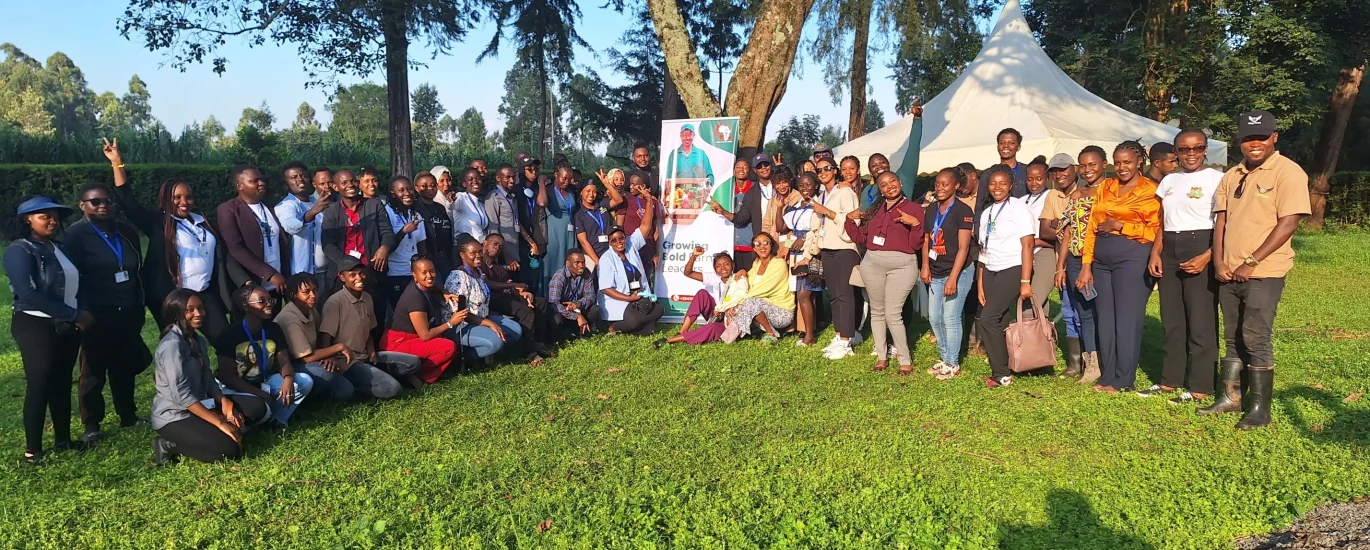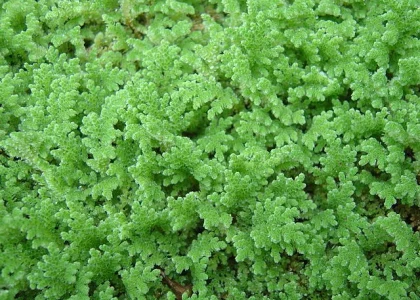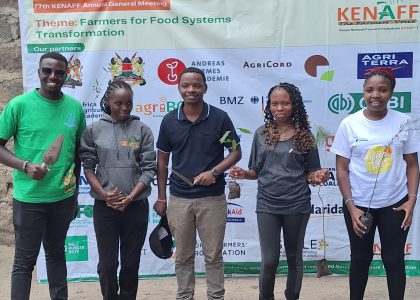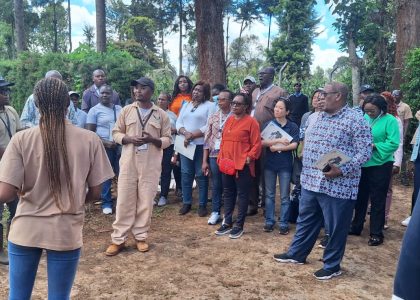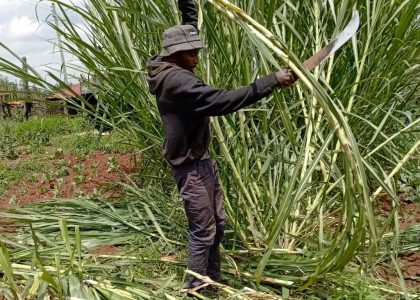On 17th May 2024, WingFarm organization hosted YALI Cohort 55 at their Githunguri demo farm. Various organizations, including Bold Impact Africa and the Young African Leaders Initiative Regional Leadership Center East Africa (YALI RLC EA), graced the event. It was a success and filled with fun, learning, and insights on sustainable agriculture.
What is Young African Leaders Initiative (YALI)?
The Young African Leaders Initiative (YALI) is the United States’ premier initiative to support the next wave of African leaders. According to statistics, nearly one-third of Africans are between the ages of ten and twenty-four, and roughly 60% of Africa’s total population is under the age of 35. This is the motivation behind the Young African Leaders Initiative (YALI), which aims to invest in developing strong, results-oriented African leaders.
The U.S. Government launched YALI in 2010 to support young African leaders as they spur growth and prosperity, strengthen democratic governance, and enhance peace and security across Eastern and Central Africa. The programs created under YALI are designed to complement each other by providing a variety of resources and avenues of opportunity to young Africans. As a part of the YALI brand, the Regional Leadership Centers (RLCs) play a unique role in reaching young African leaders on the continent with greater access to leadership training and professional development programs.
Who is Bold Impact Africa?
Bold Impact Africa, on the other hand, is a grassroots non-profit organization in Kenya that brings together farmers, farmer organizations, other NGOs, government, academic institutions, health institutions and professionals, the private sector, and other stakeholders to promote community development. Its goal is to build a better world where everyone is treated with dignity and respect while promoting sustainable development for the communities it serves.
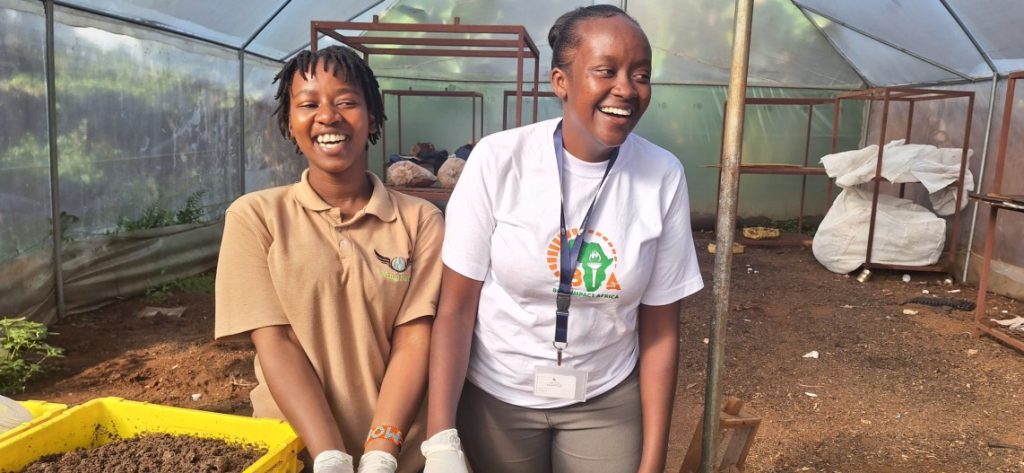
About the YALI Cohort 55 WingFarm Event
The event was a showcase of innovative and sustainable agricultural techniques, with in-depth sessions on Azolla propagation, Black Soldier Fly (BSF) farming, and indigenous vegetable farming. There was education about the benefits of Azolla, a fast-growing aquatic fern that improves soil fertility and provides a sustainable feed option for livestock.
The event delved into the world of BSF farming, a novel approach to waste management and high-protein animal feed production. It engaged different experts in agriculture who shared the best practices for sustainable production and consumption. Below is an in-depth exploration of the different educational aspects covered during the event.
1. Black Soldier Fly (BSF) Farming
The event began with an insightful educational session on Black Soldier Fly (BSF) farming. Attendees gained insights into Hermetia illucens. The lifecycle of the Black Soldier Fly (BSF) spans from Egg to larva, pupa, and finally adult. During the egg stage, the female BSF lays eggs in clusters of 500-900 favorably in decaying organic matter. Eggs hatch in about four days.
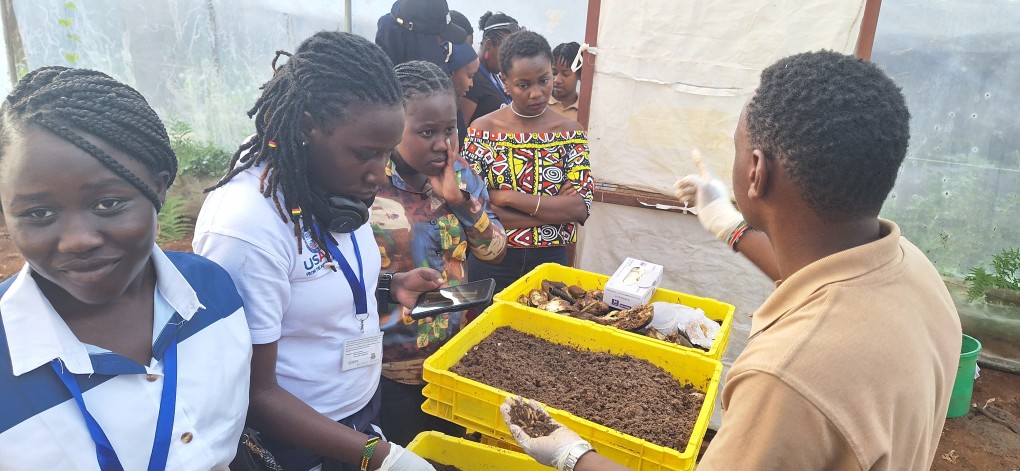
The larvae are the primary stage of interest for farming BSF. They consume a wide variety of organic waste and grow rapidly over about 14 days. Larvae are rich in protein and fat, making them valuable as animal feed. After the larval stage, the larvae enter the pupal stage, during which they undergo metamorphosis into adults. This stage lasts about 14 days.
Adult BSFs live for 5-8 days, during which they mate and lay eggs. They do not eat during this stage, relying on the energy stored during the larval stage. BSF larvae are detritivores, feeding on organic waste such as kitchen scraps, manure, and agricultural by-products. They can reduce the volume of waste by up to 50-80%, converting it into valuable biomass. As the larvae consume waste, they convert it into protein-rich biomass and frass (larval manure), which can be used as a high-quality fertilizer.
2. Azolla Propagation
Attendees of this event learned about a variety of topics on Azolla, ranging from the biological characteristics of Azolla to its practical applications in sustainable farming. Azolla is a genus of seven species of aquatic ferns in the family Salviniaceae. These plants float on the surface of the water and are capable of rapid growth under optimal conditions.
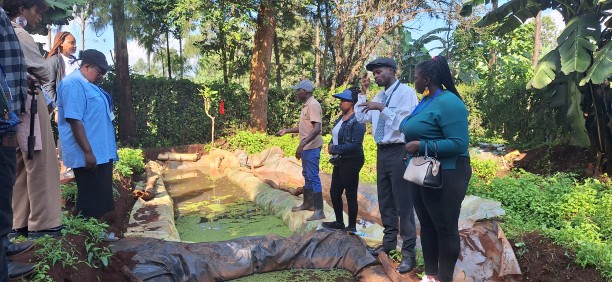
One of the most remarkable features of Azolla is its symbiotic relationship with the cyanobacterium Anabaena azollae. This cyanobacterium lives in the cavities of the Azolla leaves and is capable of fixing atmospheric nitrogen into a form that the plant can use. This biological nitrogen fixation process reduces the need for synthetic nitrogen fertilizers.
Farmers can propagate Azolla by simply spreading fragments of the plant over the water surface. Given proper conditions, Azolla can double its biomass in just a few days. Azolla can be harvested and incorporated into the soil as a biofertilizer, enriching the soil with organic matter and nutrients, particularly nitrogen. Azolla is highly nutritious, containing protein, vitamins, and minerals. It can be used as a feed supplement for livestock, poultry, and fish, reducing the reliance on commercial feeds.
3. Black Nightshade Farming (Mnavu, Managu, Osuga, Rinagu etc.)
Participants gained in-depth knowledge of the plant’s growth cycle, optimal growing conditions, soil preparation, pest and weed management, and harvesting practices. Black Nightshade seeds require warm soil temperatures (20-25°C) for germination. They are typically sown directly into the field. After germination, seedlings emerge within 7-14 days. Proper spacing is crucial to ensure healthy growth.
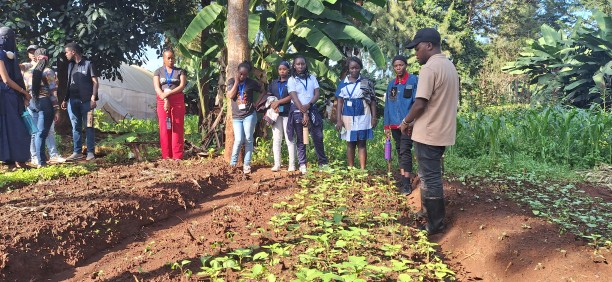
The plant undergoes rapid vegetative growth, developing broad, ovate leaves and a branching stem. During this stage, it is important to ensure adequate water and nutrient supply. Black Nightshade, like all green plants, uses photosynthesis to convert light energy into chemical energy, using carbon dioxide and water to produce glucose and oxygen. Efficient photosynthesis is vital for robust plant growth and high fruit yield.
The plant absorbs nutrients from the soil through its roots. Key nutrients include nitrogen (for leaf growth), phosphorus (for root and flower development), and potassium (for overall health and disease resistance). Mulching is a primary method to suppress weeds. It blocks sunlight, preventing weed seeds from germinating and competing with Black Nightshade for nutrients and water. Regular hoeing and hand weeding are essential, especially during the early stages of plant growth. Mechanical weeders or hoes can be used to remove weeds without disturbing the Black Nightshade plants.
Selective herbicides can be used, though they must be carefully chosen to avoid damaging the Black Nightshade. Organic farmers may prefer natural weed control methods to minimise chemical use. Rotating Black Nightshade with other crops can break the life cycle of weeds, reducing their prevalence in the field. This also helps in managing soil fertility and preventing soil-borne diseases.
Seeds can be started indoors and transplanted or sown directly in the field after the last frost. Ensure proper spacing (30-45 cm apart) to allow adequate air circulation. Regular monitoring of pests like aphids, flea beetles, and whiteflies is crucial. Use integrated pest management (IPM) strategies, including beneficial insects, organic sprays, and cultural practices to minimize pest damage.
4. Multistorey/Vertical Gardening
A wide array of topics, from the basic principles of vertical gardening to advanced techniques and maintenance practices, were gained. Multistorey or vertical gardening involves growing plants upwards in multiple layers, as opposed to traditional horizontal gardening. This can be achieved using various structures such as shelves, walls, or towers. It is advantageous in that it creates space optimization, improved pest control, enhanced aesthetics, easier maintenance, and potentially higher yields per square ft.
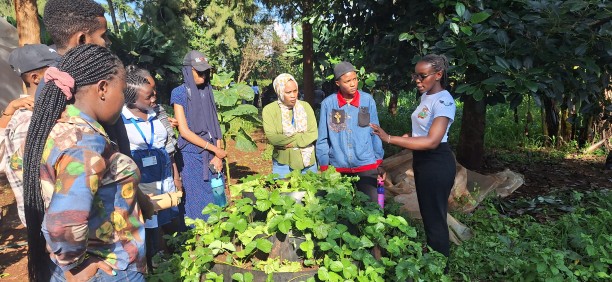
When practicing vertical gardening, it is critical to strategically place plants to optimize light exposure and growth space. Taller plants or those requiring more light go on top, while shade-tolerant plants occupy lower levels. Trellises, netting, or stakes can be used to support climbing or vining plants. Materials used should withstand weather conditions and support plant weight. Ensuring adequate airflow to prevent mold and mildew is critical, as well as choosing materials that retain moisture without waterlogging.
Applying a layer of mulch to suppress weed growth and retain moisture, as well as landscaping fabric in the planting medium, is critical. Routine maintenance is key, through frequently checking for and removing any weed sprouts and using well-composed organic matter free from weed seeds. Finally, planting densely to create a canopy that blocks light from reaching the soil, reducing weed germination, is critical.
Feedback from Participants
It is amazing to learn the process of Frass production from waste. Organic fertilizers are sustainable and income generating.
Faith Mutuku – Bold Impact Africa
Azolla propagation is amazing and is an excellent organic farming technique.
Ann Naishooki Lairumbe
Organic vegetable farming is the future of the world.
Dr. Zuhra Mukazi


